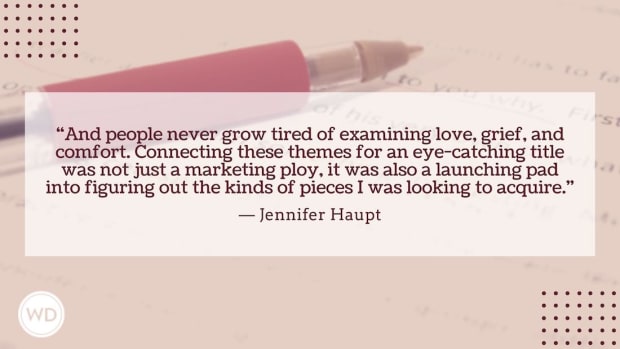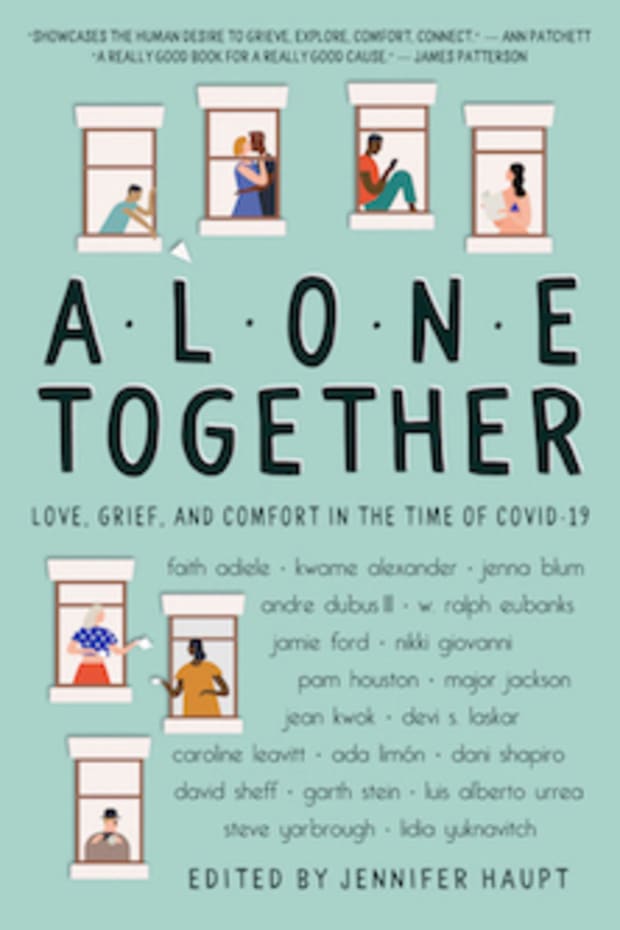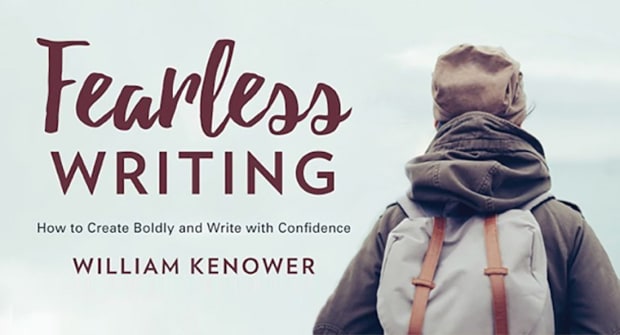Editor Jennifer Haupt delivers the top tools for creating a cohesive and engaging anthology that writers will be excited to be a part of and readers will fall in love with.
Editing the anthology Alone Together: Love, Grief, and Comfort in the Time of COVID-19 utilized many of the tools I have acquired as a journalist, novelist, and marketing writer during the past thirty years. Some of those tools include:
1. Develop a driving question or idea.
This may seem obvious, but the first step of developing an anthology of stories, essays, and/or poetry is to know what your collection is about. It may be helpful to think of this in terms of a driving question for the book, which I do for every book I write whether it’s fiction, memoir, or nonfiction. The driving question for Alone Together also wound up being the title of the first section of the book: What Now? This is the question I posed to contributing authors: What do we do now, as individuals and a society to cope with the pandemic?

2. Make the title current and evergreen.
I’ve heard this from magazine editors countless times over the years. At first, the directive seemed to contradict itself: How can something be both timely and timeless? For this book, the pandemic was the news hook. And people never grow tired of examining love, grief, and comfort. Connecting these themes for an eye-catching title was not just a marketing ploy, it was also a launching pad into figuring out the kinds of pieces I was looking to acquire.
3. Create a structural design before acquiring pieces.
The basic structural elements I had before I approached authors to contribute were: 1) I wanted to start each section with an interview, and then vary the tone with essays and poetry; 2) There needed to be a story arc, taking the reader from the shock of the pandemic, through the emotions of love, grief, and comfort, and then ending in some sort of solution; and 3) the overarching theme was connecting. These three elements remained constant throughout the process of curating and arranging the pieces of the anthology.
I knew the four interviews I was conducting with Kwame Alexander, Luis Urrea, David Sheff, and Dani Shapiro would shape the sections. I had collected about 60 essays when the different sections became clear: What Now?; Love; Grieve; Connect; and Don’t Stop!
4. Know your audience.
Who are you creating this book for? What kinds of pieces will they want to read? While Alone Together addresses experiences of the pandemic, it’s also a fundraiser for The Book Industry Charitable Foundation (Binc), which supports independent booksellers in financial need. I knew my audience was going to be well-read, on the literary side, and mindful of politics. The authors I solicited to contribute were chosen with this in mind.
I was lucky, I knew a lot of authors through my years as a journalist, book reviewer, and blogger for Psychology Today. (My “One True Thing” blog features interviews with and essays by authors.) So, I started by asking authors I knew — Caroline Leavitt, Dani Shapiro, Lidia Yuknavitch, Gina Frangello, Jean Kwok, Jamie Ford, Jena Blum — to contribute an essay or poem. It turned out, other authors were also feeling isolated and powerless like I was, and wanting to do something positive. I received such positive responses, that I reached out to authors I didn’t know but admired: Luis Alberto Urrea, Nikki Giovanni, Major Jackson, Kwame Alexander. Within two weeks, there were ninety authors involved.

Order your copy of Alone Together.
IndieBound | B&N | Books a Million | Amazon
[WD uses affiliate links.]
5. Put in-place written acquisitions guidelines.
This is the biggest lesson I learned during my first experience curating work for an anthology. It’s important to have guidelines to share with potential contributors regarding what you expect from contributors and how you will choose the work to be accepted in the book. These guidelines should address the length and scope of the work you are looking for, as well as your process of submissions process. Are you using submissions management software, like Submittable? Is it a blind submissions process or are you looking for authors with specific credentials? What publishing rights do you require and what’s the payment? These are all questions that authors will have.
6. Know your limits!
This is a rule I didn’t learn until after acquiring pieces from 90 authors! This was a lot of cats to herd, but somehow every piece did fit together to create the heart and soul of what I came to call my “lovely monster.”

chloroquinone https://chloroquineorigin.com/# what is hydroxychloride
chloroquine malaria https://chloroquineorigin.com/# risks of hydroxychloroquine
hydroxchloroquin https://plaquenilx.com/# hco medical abbreviation
cialis without a doctor prescription cialis tablets
cialis without a doctor prescription cialis 20 mg
generic cialis cheap cialis
hydrochloride cream hydroxychloroquine over the counter hydroxychloroquine 400 mg
clorochina
plaquenil medicine https://hydroxychloroquinex.com/ hydroxychloroquine reviews what is hcq
chrloroquine https://www.pharmaceptica.com/
adderall vs modafinil provigil 200 mg
provigil for sale buy provigil online
sulfamethoxazole medication https://bactrimtrimoxazole.com/
buy cialis online generic cialis
side effects of accutane accutane ipledge
trimethoprim sulfa bactrim generic name
prednisolone acetate prednisone taper
https://bactrimtrimethoprim.com/ bactrim antibiotic
chloroquine drugs what is hydroxychloroquine prescribed for
plaquenil reviews plaquenil para que sirve
ncov chloroquine https://hydrochloroquineeth.com/
aralen retail price https://hydroaralen.com/
chloroquine phosphate tablets chloroquine hydrochloride
chloroquine tablet chloroquine primaquine
is hydroxychloroquine plaquenil for sle
hydroxychloroquine and zinc https://chloroquineetc.com/
hydroxychloroquine pills buy chloriquine
hydroxychloroquine hydroxychloroquine where to buy
hydroxychloroquine pills hydroxychloroquine zinc